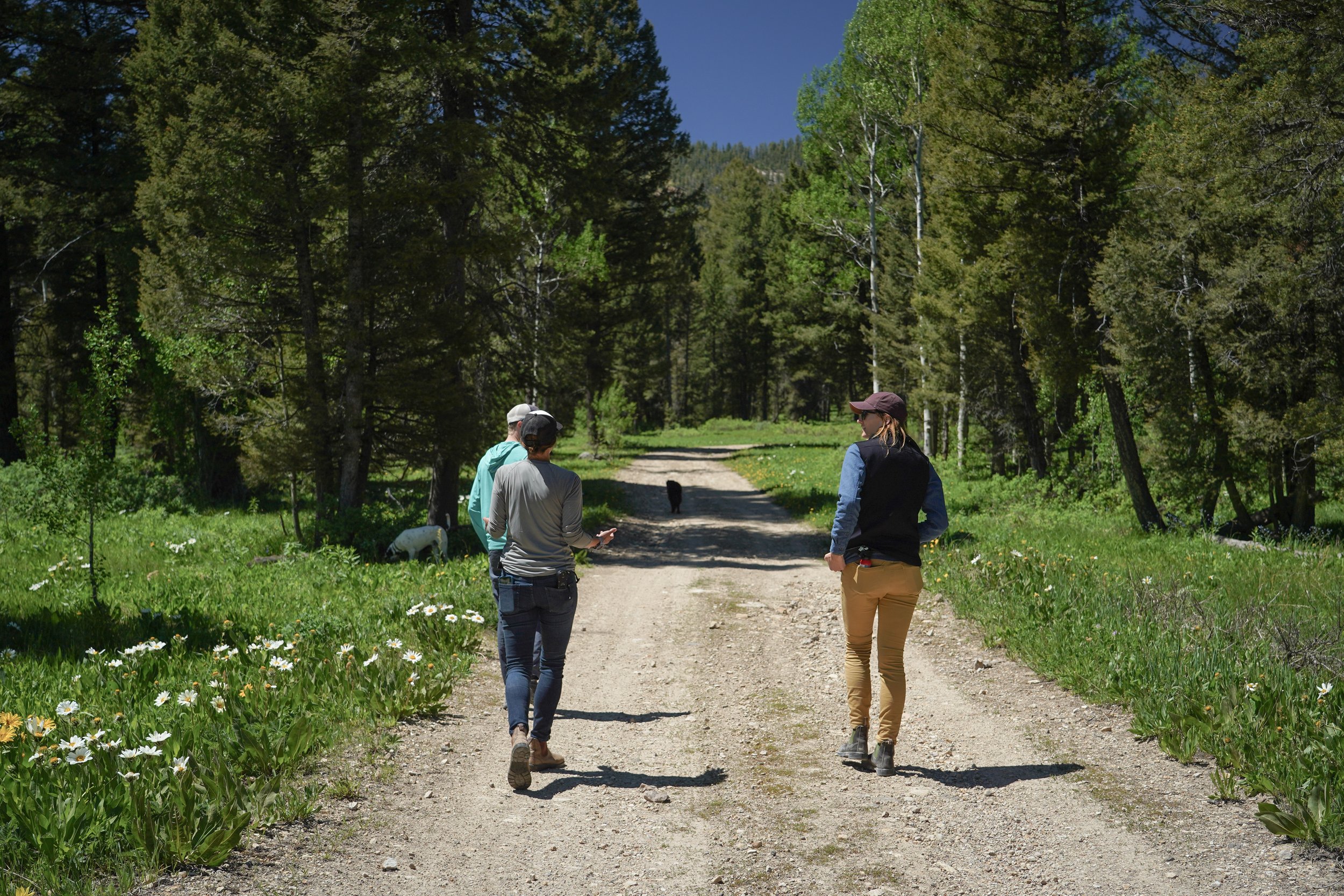
Stopping the Kilgore Gold Exploration Project
A Quiet Corner of Greater Yellowstone
Kilgore, a small eastern Idaho town about 60 miles west of Yellowstone National Park, is surrounded by family farms and ranches, thick stands of aspen, and fields of wildflowers, and sits just below the rugged and remote Centennial Mountains, where elk, mule deer, grizzly bears, and wolverines wander through the wild landscape.
Cold, clear streams flow down from the Centennials through Kilgore and provide habitat for Yellowstone cutthroat trout; water for local farms, ranches, and Idaho’s mighty agricultural economy; and clean drinking water for 300,000 Idahoans.
For generations, Idaho families have come to Kilgore and the Centennials for hunting, fishing, hiking, camping, snowmobiling, motorized recreation, and solitude. Kilgore is Idaho’s outdoor heritage at its best. One of the trailheads into the Centennial Mountains is here, and it's where ranchers graze their cattle; outdoors people hike across the Continental Divide National Scenic Trail; and elk, grizzly bears, and wolverines make their homes.
Now, a financially unstable foreign mining company with a track record of empty promises wants to build an open-pit, heap-leach, cyanide gold mine in the foothills of the Centennials directly above Kilgore.
This mine would scar the landscape, fracture wildlife habitat, and poison Idaho’s water.
Cyanide is a toxic chemical used in mining that’s so dangerous, it’s illegal next door in Montana.
This type of mine would forever scar the pristine landscape, spoil solitude, poison Idaho’s irrigation and drinking water, and threaten Idaho’s way of life. It doesn’t have to be this way, but unless we fight together this mine will move forward.
Thankfully, Idaho hunters, anglers, farmers, ranchers, outdoor recreationists, and families are coming together to stop this open-pit, heap-leach, cyanide gold mine to protect Idaho’s outdoor heritage and way of life.
Gold and Cyanide
Without action, foreign-owned Excellon Resources will make this landscape unrecognizable. The financially unstable mining corporation has the go-ahead to build 10 miles of new roads, 140 drill pads, and 420 exploration drill holes on the mountainside above West Camas and Corral Creeks. The noise, dust, and carved-up mountains will permanently scar this piece of the Centennials.
Cyanide is a chemical asphyxiant that can kill people and wildlife when ingested, breathed, or absorbed through the skin. The use of cyanide in open-pit, heap-leach, cyanide gold mining poses a dangerous threat, not only because it never goes away, but because it can be difficult to capture and treat once it has been released.

Cyanide heap-leach gold mining is a process so notorious for the damage it causes, that if the proposed mine site was located just ten miles to the north across the Montana border, it would be illegal.
An open-pit, heap-leach, cyanide gold mine in the Centennials threatens the cold, clear creeks that begin in the foothills. These creeks recharge the Eastern Snake Plain Aquifer, which is the only source of clean drinking water for 300,000 people in Rexburg, Idaho Falls, Twin Falls, and the surrounding communities.
Fighting for Kilgore’s Future
The Greater Yellowstone Coalition and our partners at Idaho Conservation League and Advocates for the West, alongside concerned community members organized through the Clean Kilgore Coalition, are fighting Excellon’s Kilgore Project .
In December 2019, GYC and partners won a lawsuit filed against the U.S. Forest Service in 2018 on the basis that the agency failed to fully examine the Kilgore Project’s potential impacts to water quality and Yellowstone cutthroat trout.
In May 2020, it was further decided that Excellon must cease additional exploration until the Forest Service issued a new decision on the environmental impacts of the project.
In January 2021, the Forest Service released a new draft environmental assessment, which GYC and partners still found lacking in substantive environmental review of water quality and Yellowstone cutthroat trout impacts. As we worked on our analysis and recommendations for the assessment, nearly 4,000 concerned community members, ranchers, and public land advocates stepped up to submit comments in support of more detailed environmental review.
The Greater Yellowstone Coalition and partners continue to pursue all available legal and administrative means to protect this remote and remarkable corner of Greater Yellowstone from toxic, destructive gold mining. We are committed to preserving the landscape for the vital habitat, clean water, recreation opportunities, and distinctive character it offers.
As always, Yellowstone is more valuable than gold.
Take an aerial tour of the Kilgore Project site and learn more about this looming threat.
Become a Kilgore advocate today.
Sign up and stay up-to-date with how you can make a difference.



